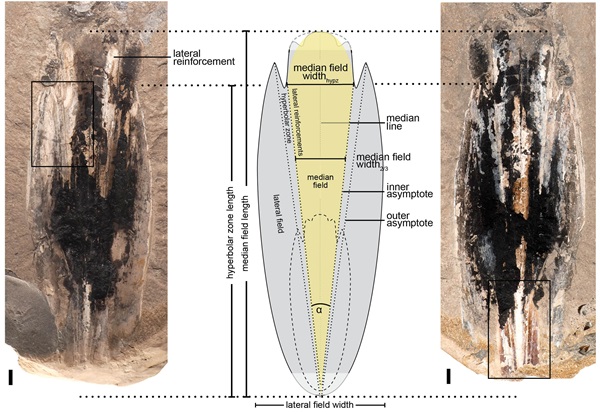 New Vampire Squid Discovered in Luxembourg;
Credit: MNHN
New Vampire Squid Discovered in Luxembourg;
Credit: MNHN
On Monday 4 March 2024, Luxembourg's Natural History Museum announced that a new species of the cephalopod (order “Vampyromorpha”) has been discovered during the Lost Ocean Digging in Bascharage in May 2022.
The fossils discovered were from the period when Luxembourg was covered by oceans in the Jurassic period of history and shine light on prey-predator relationships.
Researchers Robert Weis and Ben Thuy found fossils of fish feeding on coleoids and vice-versa in the ancient Jurassic oceans of Luxembourg. They uncovered and named the fossilised remains of a previously unknown sea species: Simoniteuthis michaelyi.
The new vampyromorph coleoid discovered in the Early Jurassic strata near Bascharage, helps to learn about the evolutionary history of these ancient deep-sea creatures. The fossilised gladius and head–arm complex of Simoniteuthis michaelyi bridge the gap between the Loligosepiidae and Geopeltidae families.
A long time ago, tuna-like fish, known as pachycormids, roamed the early Jurassic seas. A re-assessment of some 70 fish fossils from this period in the paleontological collections of the 'natur musée' led to an astonishing discovery.
Six of these fish were found with a surprising twist – their bellies contained remains of cephalopods shells. This association, never before documented in Luxembourg, strongly suggests that these fish intentionally dined on eight-armed coleoids, called teuthids.
Importantly, this discovery hints at a widespread feeding strategy called "teuthophagy," indicating that these ancient predator fish made a habit of feasting on cephalopods. Evidence from similar deposits in Germany further supports this revelation.
The researchers also found a gladius, a demineralised shell part, in the dorsal mantle of octobrachian and teuthid coleoids. The gladius belongs to families like Teudopsidae and Loligosepiidae. The latter are the ancestors of today's Vampyromorpha: deep-sea vampire squids.
According to the museum, the fossil is truly exceptional. First, because it preserves fossilised ink and soft tissues of the cephalopod, including its arm crown and remains of the eyes, which is very rare, and second, because the fossil offers clues to in situ predator-prey interactions. Two specimens of the small bony fish Leptolepis, found near Simoniteuthis michaelyi's buccal mass region, suggest the creature held its prey in its mouth.
Simoniteuthis michaelyi's habitat preferences challenge conventional wisdom. Unlike its modern deep-sea relative, Vampyroteuthis infernalis, the Early Jurassic vampyromorph roamed and hunted in shallower waters. The findings prompt questions about the evolutionary journey and feeding behaviour changes in vampyromorphs over time. According to the current fossil record, a vertical migration into deeper waters (probably associated with a shift in feeding behaviour) occurred at least since the Oligocene.








